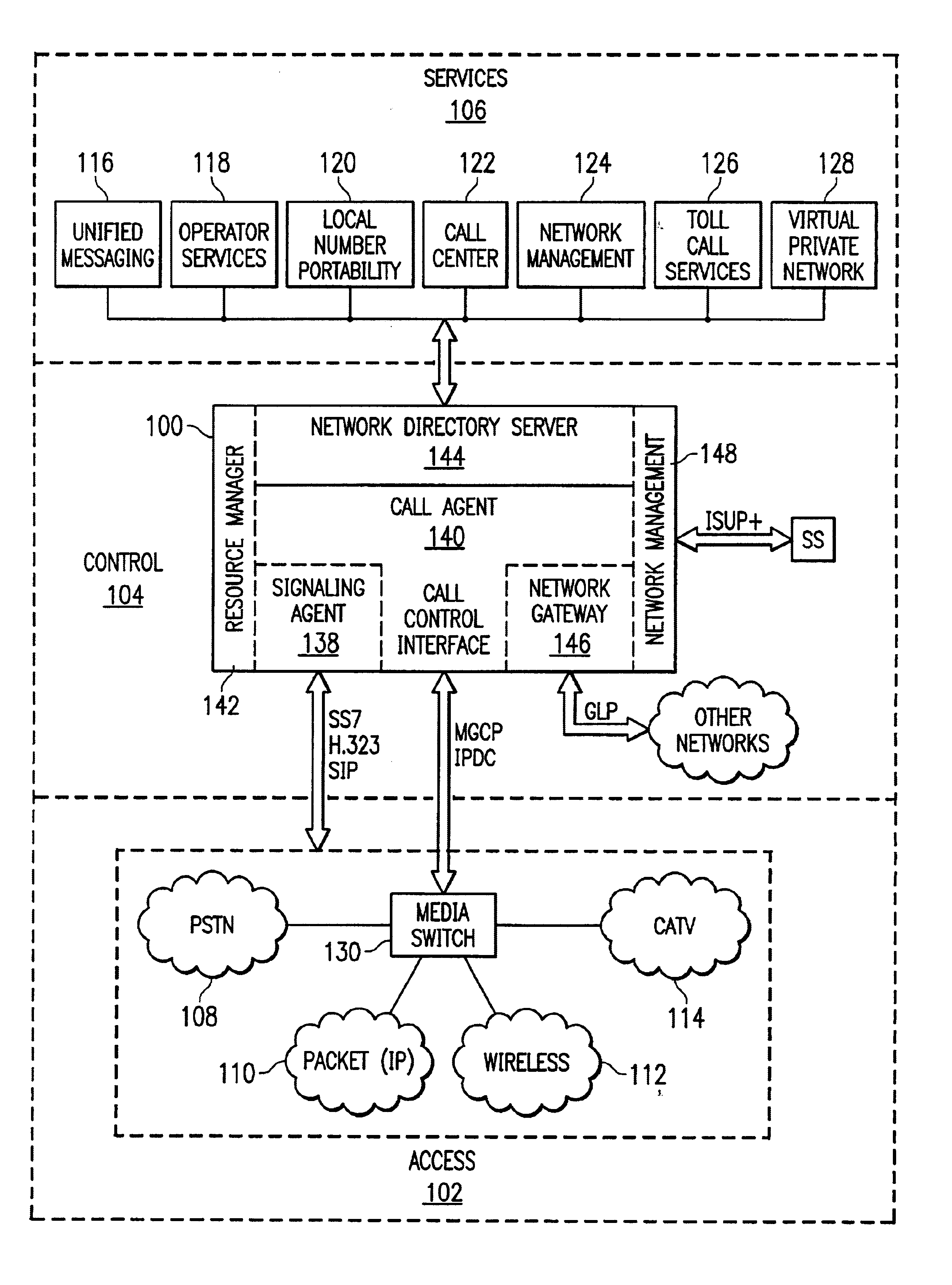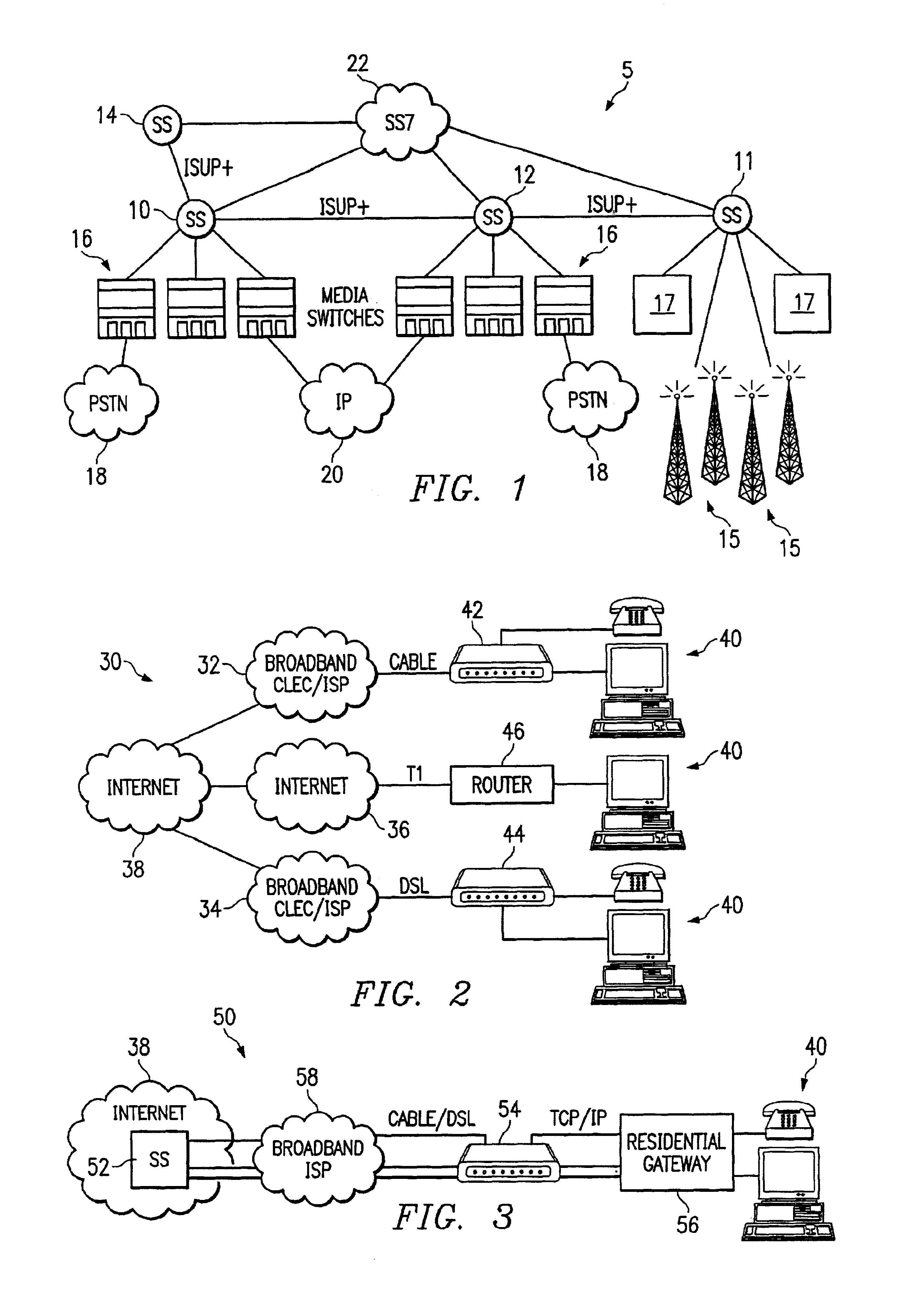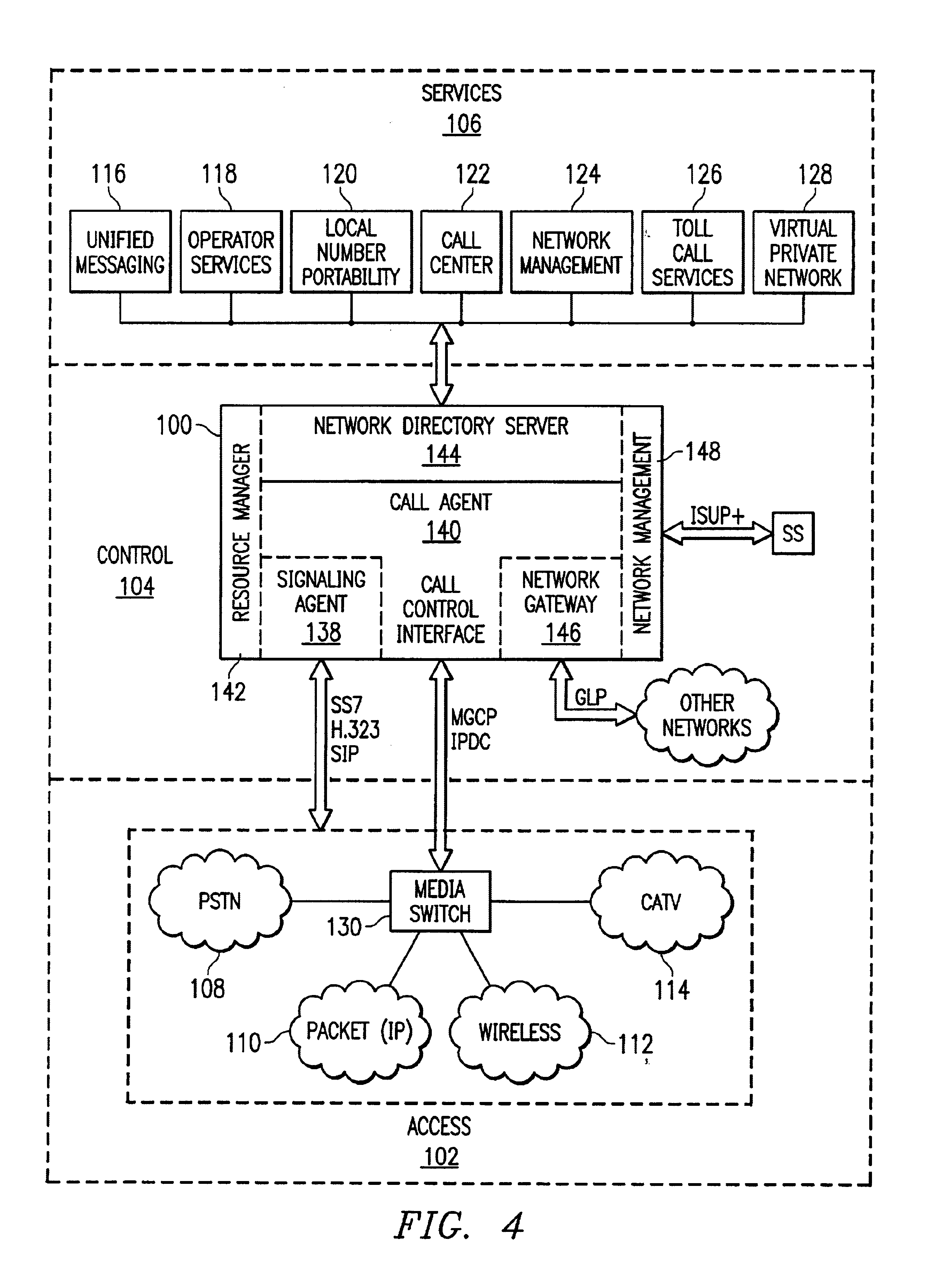[0007]The invention provides several technical advantages. Various embodiments of the invention may have none, some, or all of these advantages. For example, the invention may provide the technical
advantage of enabling operators of
wireless systems to provide switching control in a single platform while removing dependencies on protocols and / or air interfaces of different systems. Another technical
advantage of the invention is that the invention may provide effective control for high-bandwidth applications such as video and
Internet protocol (IP) and Internet applications without regard to the
air interface used. In effect, a single platform may provide portability for logic, data, and services, which in turn allows these elements to operate independently of ports and to serve a wider coverage area. For example, the invention may efficiently provide access to databases for services such as billing and sales in conjunction with data registers such as Home Location Register (HLR) and / or Visitors Location Register (VLR). Such an
advantage may enable new subscriber management, and reduce the redundancy and the complexity of
database requirements. For example, the invention may include hand-over requirements and functionality to efficiently move a
mobile device such as a mobile phone from a first covered area to another covered area. Another technical advantage of the invention is that the invention may provide
base station radio control. For example, configuration information may be received from a service node and preserved in the service node as a universal location register. In this way,
mobile location information may be received from any
radio frequency interface and / or gateway and control a
mobile device using the register.
[0008]Another technical advantage of the invention is that the invention may provide a
system and method that may be used with existing systems and may provide a seamless transition from existing networks while providing an IP infrastructure to support newer, 3G networks. Another technical advantage of the present invention is that the invention improve network efficiency by reserving and allocating, rather than
seizing, channels. Rather than routing bearer channels, the invention looks for an optimal virtual
route from distributed ports on the edge of a network (e.g., a
base station RF ‘channel’). Utilizing control information, the switch may determine
origination and termination and
route sessions either between adjacent base stations or across the country using
voice over IP (VoIP) routing.
[0009]For example, the invention provides design flexibility in allowing control of several distributed switches and base stations as a single unified network. Another technical advantage of the invention is that the
distributed switching allows cells to be connected any-to-any through IP, thus improving the drawbacks that are typically associated with
physical point-to-point
connectivity achieved by traditional Public Switched Telephone Networks (PSTNs) technology. For example,
circuit switching technology typically requires constant
traffic engineering as cells are added or divided, and consumes land line and mobile switching center ports even when they are not utilized. As another example, long distance calling requires the PSTN to be used as a
transport network between mobile switching centers, which also requires constant
traffic engineering and utilizes inefficient facilities, especially during
roaming.
[0010]Another technical advantage of the invention is that distributed control intelligence may be used to authenticate, control, and monitor call and / or session traffic between network elements such as base stations, controllers, distributed switches,
application software, and signaling systems. The invention may enable new IP protocols such as
Session Initiation Protocol (SIP) to interact directly with a
mobile device such as a
handset for enhanced portability services where control and content are collapsed into a single packet-based
stream.
Network providers may be able to determine implicit or explicit routing, queries, and service requests from anywhere in the network using the advantages of the present invention. In effect, the invention provides the type, features, and performance of subscriber sessions between various media and network types to provide
broadband multi-
service networks in a wireless arena. The invention may enable new service creations such as
content distribution, video,
Wireless Access Protocol (WAP) and conferencing that may provide
session control of any type of
multimedia traffic in a typically stateless environment. Other technical advantages are readily apparent to one skilled in the art from the following figures, descriptions, and claims.
 Login to View More
Login to View More  Login to View More
Login to View More 


